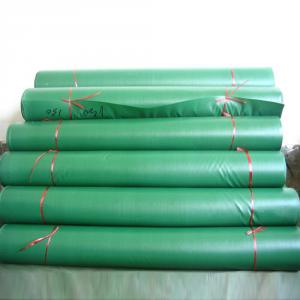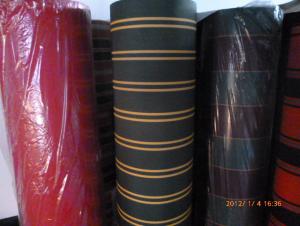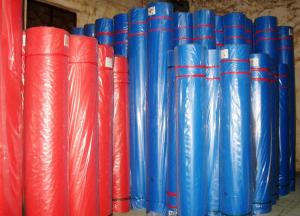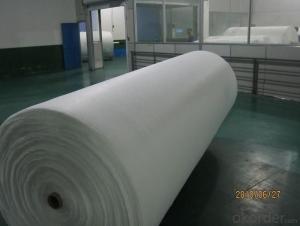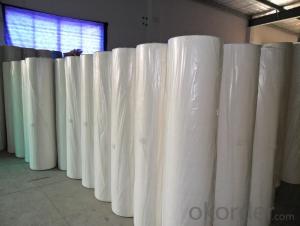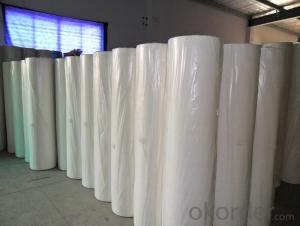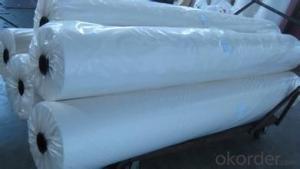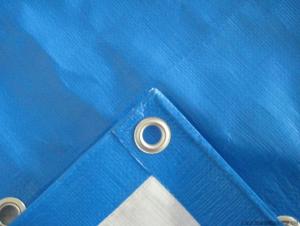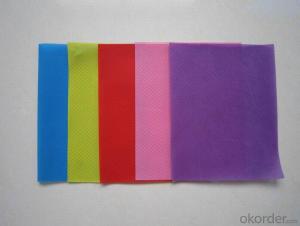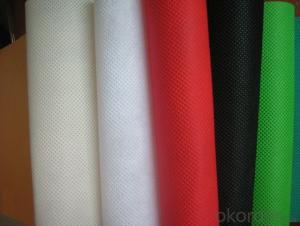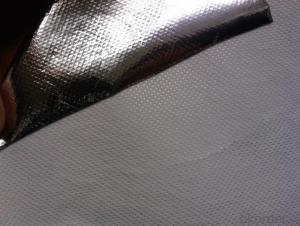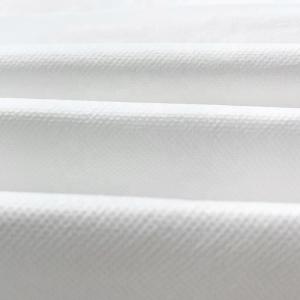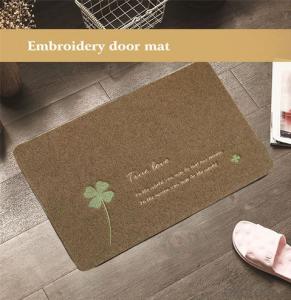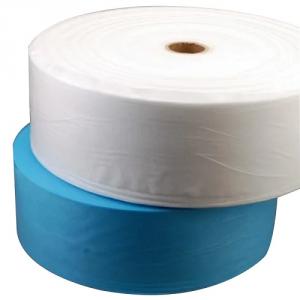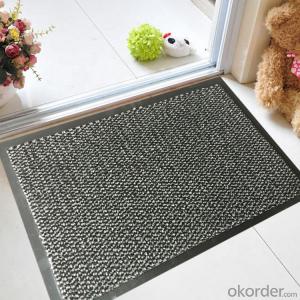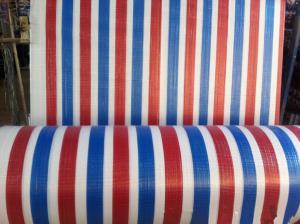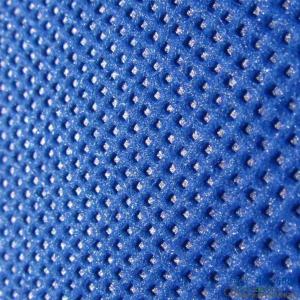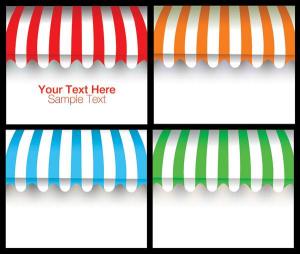100% recycle cotton non woven fabric 70% recly cotton and 30% polyester
- Loading Port:
- Shanghai
- Payment Terms:
- TT OR LC
- Min Order Qty:
- 1000 roll
- Supply Capability:
- 10000 roll/month
OKorder Service Pledge
OKorder Financial Service
You Might Also Like
PP non woven weed control mat is made of environmentally friendly raw materials, pp spunbond nonwoven fabric. It used to prevent the growth of weed, without the use of potentially dangerous chemical sprays or labor intensive hoeing. Once installed, weed mat will continue providing protection for years without maintenance.
They are permeable fabrics, which allow air, water and nutrients to pass through, and designed to block out the sun to reduce photosynthesis and stop weed growth.

The use of landscaping fabrics has become extremely popular in recent years for many reasons:
1. Leisure time is maximised - the need for weeding and on-going maintenance is minimised
2. Environmentally friendly - no need for chemical based weed killers
3. Promotes healthier plants - it allows the soil to breath and water to permeate
We offer different types of weed control fabrics to suit all applications and budgets.
1. Available in a range of sizes & materials to suit various applications from small to large landscaping projects, in both commercial and domestic situations.
2. All our landscape fabrics are UV stabilised
3. Ideal for use under paths, patios, decking, paving, bark mulch, gravel etc.
FEATURES:
1. Weed suppressant and drainage control landscaping fabric
2. Spun bonded non-woven fabric – will not fray when cut
3. Easy to use
4. Environmentally friendly
5. Allows water, air and nutrients through, suppressing weeds without the use of chemicals
6. Good alternative to Plantex® where cost is a factor
7. UV Stabilised
8. Reduces the level of watering required due to the slower rate of water evaporation
FUNCTION:
1. Cover crops in the ground surface,prevent weeds and against the insect
2. Controlling soil humidity and the temperature
3. Does not affect the growth of the crops
4. Protects plants from harmfully solar radiation
5. Air permeability, water permeability help crops growth.
6. Mothproof, eco-friendly, breathable, anti-bacteria, tear-resistant, fusible
APPLICATIONS:
1. Weed block for landscaped garden beds
2. Permeable liners for planters (stops soil erosion)
3. Weed control under wooden decking
4. Geotextile for separating aggregate / soils under walkway blocks or bricks
5. Assists in preventing paving from settling unevenly
6. Landscape fabric prevents soil erosion
Health - Hygiene & Medical
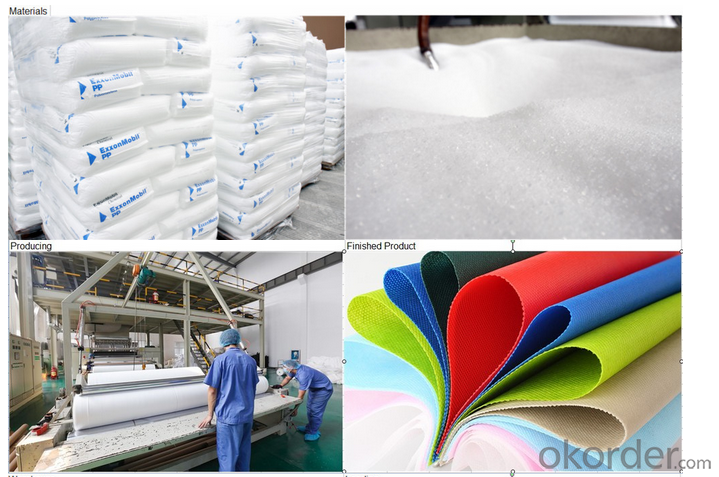
Shoes & Garments
Coveralls
Pillow cases
Airline Headrests
Interlinings
Clothing and Glove insulation
Bra and Shoulder Padding
ADVANTAGES:
1. Lower labour costs as no weeding maintenance for years;
2. Water seeps through and can conserve soil moisture for improved growing conditions;
3. Air escapes – humidity rises through the mat for a more controlled growing environment;
4. Increase crop yields close to 25% due to improved growing conditions and absence of water stress and competition of nutrients absorption from weeds;
5. Minimises bacteria and fungus problems especially Algae;
6. Strong, woven construction or pressed fibre sheet resists tears and punctures;
7. Resistant to mildew, rot, water, sunlight and most of the agricultural chemicals
8. Fertilizer is applied on the mat, thus helping the owner or estate manager to monitor the progress of manuring;
9. Prevents soil erosion or leaching of soil nutrients or fertilizers applied;
10. Environmental friendly.
FAQ:
Q .What is the material of the non woven fabric ?
A .PP spunbond non woven fabric
Grade A: 100% Polypropylene
Grade B: 90% Polypropylene +10% filling
Q .What about the width of the non woven fabric ?
A .We can cut the fabric as your requirement. Our width of machine is 240cm, so the max of the width is 240cm
Q .What about the color ?
A .Any color is available. You just need to give me the Panton Num or send me your sample. Then we will make the color samples to you for approve
Q .What about the GSM ?
A .The thinnest of the fabric that we can produce is 9g, and the thickest is 250g. Normally the fabric that used in bag making is 50-100g, the agricultural used is 17-50g, the home used fabric is 40g and so on...
Q .What about the delivery time ?
A .We can finish the production in 2-3 days (40ft HQ)
Q .What about the price ?
A .We are the factory of the PP nonwoven fabric, We can supply you with good quality and favorable price
- Q:What are the common textile auxiliaries?
- Shorten the processing cycle or reduce the processing process, save processing time, improve processing efficiency. Reduce energy consumption, save energy and reduce costs
- Q:DTY FDY POY What are the textile raw materials?
- DTY: Stretch deformation wire, full name: DRAW TEXTURED YARN. Is the use of POY to do the original wire, stretching and false twist deformation made of processing. Often have a certain degree of flexibility and contraction. (Generally divided into network and no network of silk, the network means the network node
- Q:Is there a large yarn factory or a textile garment factory?
- Clothing (to fabrics, accessories all complete): cutting, film, sewing, ironing, inspection, packaging. The fastest 7 days out of the finished product. Above are theoretical calculations, and the actual difference
- Q:Why can the oil industry be used as raw materials for the textile industry?
- Textile raw materials is taken from the general terms of spinning and weaving, but with the textile knowledge system and the continuous development and improvement of the discipline system, especially non-woven textile materials and three-dimensional composite weaving and other technologies, the textile is now not only traditional Hand-spinning and weaving, including non-woven technology, modern three-dimensional weaving technology, modern electrostatic nano-network technology, so modern textile is a fiber or fiber aggregate multi-scale structure processing technology [1-2 ]
- Q:Today, the national textile market prospects
- 2009 is known as the most difficult winter of China's textile industry in the new century, but in this winter, the textile enterprises are not afraid, more is relying on national policy support and self-adjustment to achieve the adverse trend
- Q:What is the meaning of the number of yarns used in cotton textiles?
- Fiber only after the textile can become a fabric, and the first step is spinning yarn.
- Q:Classification of antimicrobial textiles and their characteristics
- Remember that the middle of the gap, the fiber surface is not smooth products can add things into the case, if the oil derivatives of the cross section is circular fiber is best used for dyeing printing, because the addition of things difficult to release.
- Q:How to grow in the textile industry and have their own customers
- You count down, so that the total loss of 20%, only 800KG fabric, and if you do clothes, cut when the loss plus, it is very impressive
- Q:What is the amount of alkali in the textile mill
- Diminishing, as the name implies, is to reduce the amount of something. Here refers to the polyester fabric on the corrosion treatment, the polyester fiber surface corrosion does not affect the performance of the groove, in order to achieve a soft, breathable good purpose.
- Q:What is the imo standard in the textile industry?
- But this certification for those who need more flexibility to achieve the standard brand, the market is too strict. The Global Organic Textiles Standards Working Group says that they know that not every certification can be realized immediately and that the different stages of the conversion will be defined over the next two years.
1. Manufacturer Overview |
|
|---|---|
| Location | |
| Year Established | |
| Annual Output Value | |
| Main Markets | |
| Company Certifications | |
2. Manufacturer Certificates |
|
|---|---|
| a) Certification Name | |
| Range | |
| Reference | |
| Validity Period | |
3. Manufacturer Capability |
|
|---|---|
| a)Trade Capacity | |
| Nearest Port | |
| Export Percentage | |
| No.of Employees in Trade Department | |
| Language Spoken: | |
| b)Factory Information | |
| Factory Size: | |
| No. of Production Lines | |
| Contract Manufacturing | |
| Product Price Range | |
Send your message to us
100% recycle cotton non woven fabric 70% recly cotton and 30% polyester
- Loading Port:
- Shanghai
- Payment Terms:
- TT OR LC
- Min Order Qty:
- 1000 roll
- Supply Capability:
- 10000 roll/month
OKorder Service Pledge
OKorder Financial Service
Similar products
New products
Hot products
Related keywords




